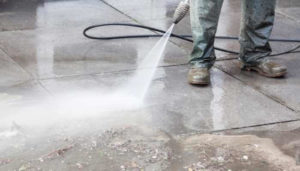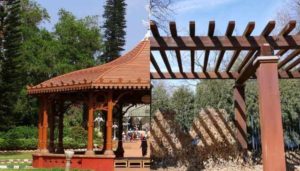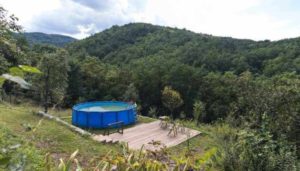There’s no denying that a propane fire pit can quickly become the highlight of your backyard. Of course, if you’ve chosen to buy one for yourself, you must already be aware of its strong points. But since a fire pit can be a significant investment, it’s only natural to wonder how long it can last. Fortunately, the answer isn’t as scary as you might think:
With proper maintenance, a propane fire pit can last between 15 to 60 years. However, improper or lack of care will render a propane fire pit useless in a matter of months; it will stop working altogether and lose its aesthetic appeal.
This article will go over the specifics of each of the different materials used and teach you how to maintain your fire pit to last a long time.
How Do Propane Fire Pits Work?
The plumbing mechanism is the most essential component of a gas fire pit. It comprises a network of pipes that channel gas from the tank to the burner. Many propane fire pits have an automatic ignition system that makes starting and extinguishing your fire pit a breeze.
Things get tricky when it comes to the ignition mechanism, as it contains electronic components that make it particularly vulnerable to moisture. If the ignition system gets wet, it will break down almost instantly. If you let this happen, you’ll either have a hefty repair expense or a massive pile of junk in your backyard. Therefore, keeping water away from the insides of a propane fire pit is the first step toward a long-lasting fire pit.
The second thing you can do to help your fire pit last longer is regularly clean the burners. Although propane is a clean-burning fuel, debris from usage or cooking can still get into the valves of the burner. If you don’t maintain the burners, they will eventually clog, thus stopping the propane flow. In this case, you might be forced to replace the valves.
What is the Durability of Various Fire Pit Materials?
Propane fire pits are available in a variety of materials. Because propane tanks are lightweight and portable, most propane fire pits are made of metal, such as stainless steel, wrought iron, or aluminum. You may also come across concrete and masonry fire pits. Let’s see how these materials compare in terms of durability.
● Stainless steel is by far the most popular choice due to its durability. Since it’s a tough material, you won’t have to worry about scratches or dings. Stainless steel is also resistant to rust. Nonetheless, you should try to protect your fire pit from rain and snow. It’s important to remember that while the material is resistant to rust, it’s not impenetrable.
● A wrought iron fire pit will probably be your best bet if your garden space has a rustic theme. This material is as tough as stainless steel, but it’s usually thicker. If left unprotected, a wrought iron fire pit will quickly fall prey to corrosion. This is why most of these fire pits are painted or powder-coated.
● Aluminum is one of the lightest metals and is practically rust-proof. Isn’t that ideal? Well, yes and no. Being a soft metal, a common concern is that an aluminum fire pit dents with a relatively mild impact. Regardless, aluminum has extended durability due to its rust resistance.
● Concrete or masonry is practically an indestructible material. As long as your fire pit is not struck by a car, it will remain intact. However, the durability comes with an obvious drawback: a concrete or brick gas fire pit is permanently installed. Therefore, you’ll have to demolish it entirely if you change your mind at some point.
Propane vs. Wood-Burning Fire Pit
When it comes to durability, propane fire pits have one major flaw: they contain some sort of mechanism vital to their operation. On the other hand, wood-burning pits are just that: pits. They don’t employ sophisticated technology and simply give you a safe place to build a fire. In this regard, wood-burning pits outlast gas fire pits. Since wood-burning pits have no mechanical components, it’s all about the material they’re made of.
While propane fire pits require enhanced protection, they make up for it by being low maintenance in other areas. Fortunately, no fumes or ash are produced due to propane fire pits. Cleaning the ashes out of wood-burning pits is a significant element of the maintenance process. If you fail to do so, your fire pit will be fully covered in soot.
When it comes to natural gas fire pits, they function similarly to propane fire pits. The key differences include the fuel type and the fact that propane is stored in tanks, while natural gas is not. Other than this, propane and natural gas fire pits have the same lifespan and maintenance requirements.
Propane Fire Pit vs. Fire Table
In general, fire pits and fire tables work on the same principles and are nearly identical in terms of durability. A fire table is typically used to enhance the aesthetic, as opposed to a fire pit, which is almost entirely intended for functionality. Regardless, both can serve you a lifetime as long as you handle them with proper care.
In Closing
Overall, there is no specific industry standard for determining the longevity of a propane fire pit. Like most things in life, a well-loved fire pit can survive a very long time. They have the potential to outlast their owners if properly cared for. A neglected propane fire pit, on the other hand, can quickly fail. Not only that, but it will also become an eyesore in your backyard.
The takeaway is that even though a propane fire pit can be a relatively big investment, the durability makes it worth the money. It all depends on you, the owner – if you correctly maintain your propane fire pit, you will never need to buy another one.














